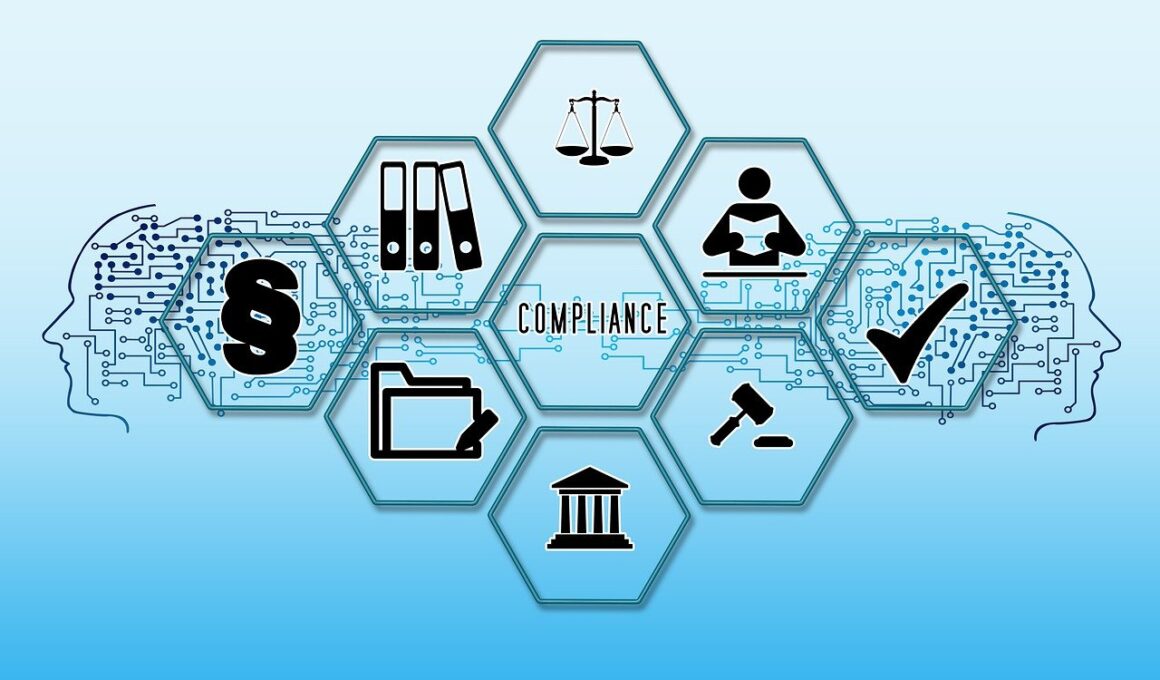Auditing Regulatory Compliance in the Manufacturing Industry
Regulatory compliance auditing is a crucial process in the manufacturing sector, ensuring that companies adhere to laws and industry standards. Compliance audits are integral for identifying potential risks within various manufacturing processes. With global standards like ISO and local regulations, adherence is mandatory to maintain operational integrity and minimize liabilities. Different types of non-compliance can lead to serious repercussions, including hefty fines and reputational damage. A successful audit not only highlights compliance status but also provides pathways for organizational improvement. To enhance compliance, manufacturers should adopt robust internal controls and regular reviews. Proper training and awareness among employees regarding compliance requirements are essential. Management commitment towards fostering a compliance culture can significantly improve audit outcomes. Using technology to track compliance can streamline the auditing process, ensuring real-time updates and accuracy. Audit firms specialize in assessing compliance levels, providing recommendations for best practices. Leveraging their insights can lead to enhanced operational efficiencies and sustainable practices. Notably, a proactive approach to manufacturing audits can result in enhanced product quality and safety, benefiting both the organization and its customers.
Manufacturing processes often involve complex supply chains requiring strict regulation compliance. Auditing within these environments necessitates a comprehensive understanding of both regulatory frameworks and operational details. Evaluating compliance means checking that every aspect, from raw material sourcing to final product delivery, meets specific standards. This can improve accountability across the supply chain. Regular audits can prevent issues related to non-compliance, such as product recalls or subpar product quality. Effective compliance audits should consider both internal factors, like employee training, and external factors, such as supplier performance. An effective audit often includes specific checklists tailored to the process, ensuring no detail is overlooked. Maintaining accurate records of audits and findings is vital for regulatory purposes. Detailed documentation aids when addressing any compliance concerns and serves as proof of compliance status. Furthermore, audits should go beyond mere compliance checks; they should foster a culture of continuous improvement. Stakeholder engagement throughout the audit process can provide valuable insights and deeper understanding of compliance requirements. Establishing a feedback loop also helps in refining compliance strategies, and regular updates on regulations ensure that the company is always aligned with industry standards.
Importance of Robust Compliance Auditing
Robust compliance auditing in manufacturing is imperative for maintaining operational effectiveness. It helps ensure adherence to regulatory guidelines while identifying vulnerabilities that can compromise production. A comprehensive audit evaluates both compliance with regulations and operational efficiency. Aside from enforcing accountability, audits reveal areas for improvement. For example, if safety procedures are not followed, audits can provide essential insights to mitigate risks. Moreover, regular audits foster a culture of transparency and ethical behavior. Auditors assess whether companies conduct regular safety training and practices, encouraging a proactive approach to potential hazards. The outcome of a compliance audit can significantly affect an organization’s market reputation and customer trust. Therefore, performing regular audits helps to avoid penalties and fines associated with non-compliance. When compliance issues arise, prompt corrective action must be taken to ensure resolution. Implementing audit recommendations can lead to streamlined processes, enhanced quality control, and cost savings. In essence, a well-structured audit strategy aligns regulatory compliance with corporate objectives. This alignment can enhance productivity and profitability in today’s highly competitive market, ultimately leading to sustained organizational success for manufacturers.
Strategically, conducting compliance audits can offer valuable insights into overall operational health. By utilizing key performance indicators (KPIs), businesses can gauge how well they adhere to compliance requirements. Monitoring KPIs related to compliance can reveal trends that manufacturers need to address immediately. Additionally, engaging third-party auditors can provide an unbiased perspective, enhancing audit credibility. Third-party reviews often bring fresh insights, uncovering blind spots internal teams may overlook. Furthermore, involving external auditors can build trust with stakeholders, as transparency in operations is shared with third parties. Although these assessments can be an investment, the consequences of neglecting compliance can be far more expensive. Frequent audits also adapt compliance practices to continuously evolving regulations. Employee involvement in the audit process can enhance overall outcomes and encourage accountability throughout the organization. Therefore, training initiatives should align with audit findings, ensuring employees understand compliance requirements. A comprehensive compliance management system should thus be established, incorporating audit outcomes into everyday operations. This not only fulfills regulatory obligations but also aligns with broader organizational goals. Regular reassessments and updates of such systems help maintain compliance integrity and foster a culture of quality and safety.
Challenges in Manufacturing Compliance Auditing
The manufacturing industry faces numerous challenges concerning compliance auditing, which can hinder efficiency and effectiveness. One significant challenge is the rapid pace of regulatory change, often leaving manufacturers struggling to keep up. For instance, updates in environmental standards demand immediate attention to avoid penalties. Similarly, varying regulations across regions can complicate multi-site operations, necessitating localized compliance strategies. The complexity of supply chains further adds layers of difficulty, as manufacturers must ensure their suppliers also comply with regulations. Another challenge includes resource constraints, where small manufacturers lack the staffing to conduct exhaustive audits regularly. This often leads to gaps in compliance oversight. To overcome these challenges, a proactive approach is essential. Manufacturers must invest in continuous education and training, ensuring their teams are well-versed with compliance updates. Additionally, employing digital compliance software can streamline auditing processes, generating real-time compliance reports. Technology can assist in tracking compliance-related documentation, making audits more manageable. Furthermore, collaboration with regulatory bodies can aid manufacturers in understanding evolving requirements. By approaching compliance strategically, manufacturers can mitigate risks associated with non-compliance while enhancing operational efficiency and market reputation.
In conclusion, auditing regulatory compliance in the manufacturing industry is vital for creating sustainable operations. Manufacturers must recognize the importance of thorough compliance audits for regulatory adherence and quality assurance. Audit processes serve both to identify compliance gaps and to enhance operational practices. While challenges exist, establishing a culture that values compliance can drive success and improve business resilience. By continually reviewing and updating compliance protocols, manufacturers can effectively navigate changing regulations. Collaboration among teams fosters a comprehensive understanding of compliance, resulting in enhanced accountability. A well-informed workforce can proactively address compliance requirements, significantly reducing the risk of non-compliance. Additionally, leveraging technology and external audits can lead to more effective audit outcomes. Regulatory compliance should not be viewed solely as a requirement but as an opportunity for improvement and growth within the organization. By integrating compliance into the core of operations, manufacturers can ensure they are not only meeting regulatory demands but also driving innovation. Ultimately, the goal of compliance auditing is to support manufacturers in achieving operational excellence while safeguarding their reputation and enhancing product safety.
Future of Compliance Auditing in Manufacturing
The future of compliance auditing in manufacturing will likely be shaped by advancements in technology and evolving regulatory landscapes. As automation and artificial intelligence become integrated into manufacturing processes, they will also transform compliance auditing. Leveraging big data analytics will enable manufacturers to conduct real-time compliance monitoring, enhancing transparency and accuracy. Moreover, the rise of Industry 4.0, characterized by the interconnection of digital technologies, will facilitate more robust compliance frameworks. Increased connectivity means that compliance measures can be monitored consistently, simplifying audit tasks. However, with technological advancements come new compliance challenges; thus, staying informed of these developments is imperative. Regulatory bodies will continue to adapt their frameworks, necessitating manufacturers to remain agile. Enhanced collaboration and communication between different stakeholders, including regulatory bodies, suppliers, and customers, will also play a key role in shaping future compliance audits. As global supply chains evolve, manufacturers must ensure that cross-border compliance requirements are effectively addressed. Investing in employee education regarding emerging trends will be crucial. By embracing change and leveraging innovation, manufacturers can enhance their compliance auditing processes, ensuring they remain competitive in the ever-changing landscape.


